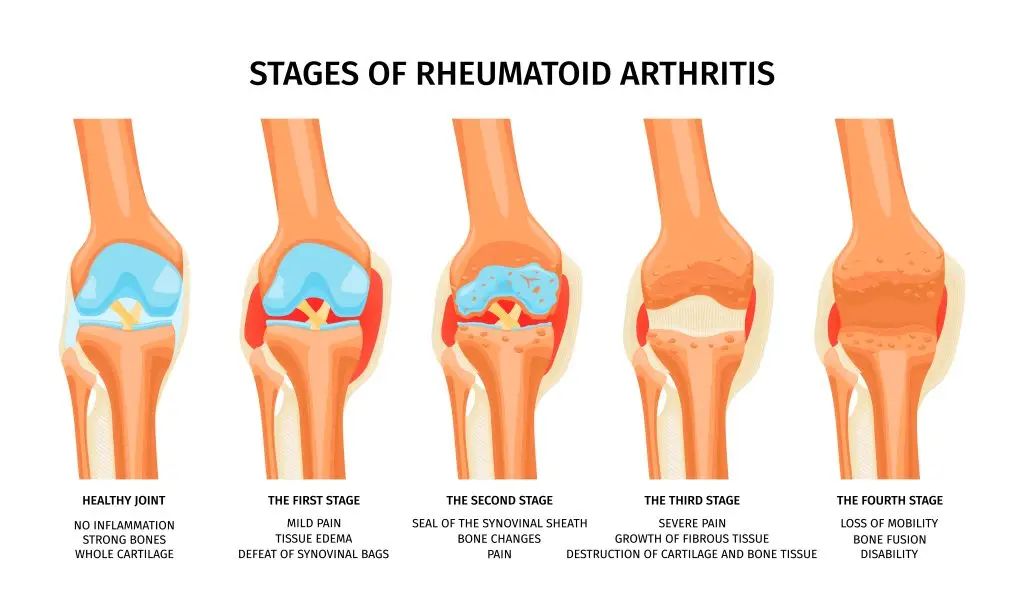Temporal arteritis (TA), or giant cell arteritis (GCA), is a form of vasculitis (inflammation of your blood vessels) that affects the arteries of your scalp, neck and arms. With this condition, most commonly your temporal arteries (the blood vessels near your temples) become inflamed (swollen) and constricted (narrowed). Your temporal arteries supply blood from your heart to your scalp, jaw muscles and optic (eye) …
Takayasu’s Arteritis
Takayasu’s arteritis (also called Takayasu disease, pulseless disease or TAK) is an uncommon form of vasculitis or inflammation in your blood vessels. It affects your biggest arteries, like your aorta (the main blood vessel that leaves your heart) and arteries that branch off of your aorta and bring oxygenated blood from your heart to your body tissues. Affected arteries include the ones that supply …
Arthritis
Arthritis refers to swelling and tenderness in one or more joints. The most common symptoms are joint pain and stiffness, which often worsen with age. There are many forms of arthritis, but the two most common types are osteoarthritis and rheumatoid arthritis. Osteoarthritis is a degenerative joint condition that occurs when cartilage breaks down over time. Cartilage is the smooth, …
Osteoarthritis
Osteoarthritis is the most common type of arthritis (a condition that affects your joints). Healthcare providers sometimes refer to it as degenerative joint disease or OA. It happens when the cartilage that lines your joints is worn down over time and your bones rub against each other when you use your affected joints. Usually, the ends of bones in your joints are …
Gout
Gout is a form of inflammatory arthritis that causes pain and swelling in your joints. Gout happens when there’s a buildup of uric acid in your body. Gout most commonly affects your big toe joint. But it can affect other joints, including your: Knees. Ankles. Feet. Hands and wrists. Elbows. Gout symptoms come and go (recur) in episodes called flares or gout attacks. …
Juvenile Idiopathic Arthritis
Juvenile idiopathic arthritis (JIA) is the most common type of arthritis that affects children. JIA is a chronic (long-lasting) disease that can affect joints in any part of the body. JIA is an autoimmune disease in which the body’s immune system mistakenly targets the synovium, the tissue that lines the inside of the joint, and the synovial fluid in the joint. This …
Psoriatic Arthritis
Psoriatic arthritis is a type of arthritis. It usually affects people who have psoriasis or a biological family history of psoriasis. Arthritis is a common disorder that affects your joints. It causes pain and inflammation in and around your joints. Psoriasis causes inflammation in your skin. Psoriasis rashes are patches of discolored skin covered with scales. These thick, scaly areas are called plaques. …
Reactive Arthritis
Reactive arthritis (Reiter’s syndrome) is a rare, temporary form of inflammatory arthritis that’s triggered by a bacterial infection. It causes pain and stiffness in your joints, especially in your lower body. It can also cause symptoms in other body tissues, like your eyes and skin, as well as whole-body symptoms like fatigue. But unlike most types of arthritis, it’s not a lifelong condition, and it usually …
Rheumatoid Arthritis
Rheumatoid arthritis (RA) is a chronic (ongoing) autoimmune disease that causes pain, swelling and stiffness in the lining of your joints (synovium). It most commonly affects the joints in your fingers, hands, wrists, knees, ankles, feet and toes. RA usually occurs in the same joints on both sides of your body, which makes it different from some other types of arthritis. Uncontrolled inflammation damages cartilage, which …
Septic Arthritis
Septic arthritis (also known as infectious arthritis) happens when an infection spreads to one or more of your joints and causes inflammation. The inflammation is in the surface of the cartilage (a type of connective tissue) that lines your joints and the synovial fluid that lubricates your joints. Bacteria, a virus or fungus may cause the infection, which usually comes …
